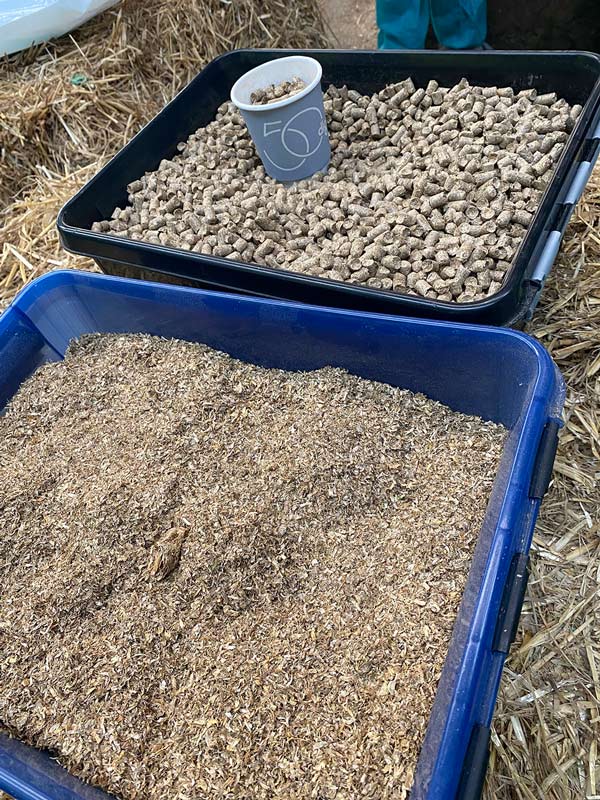In the heart of central Jutland, an open barn event echoed the harmonious partnership between agriculture and biogas, marking a triumph for sustainability.
Picture this: stakeholders in agriculture and biogas, clad in stylish blue-grey suits, fueled by a healthy dose of curiosity, gathered at Knudsminde farm for an enlightening "open barn" event. The focal point of the morning was an exploration of practical insights gained from using straw pellets as bedding in cattle herds.
Before the official kick-off, the air buzzed with camaraderie over cups of coffee, setting the stage for lively conversations and sparking enthusiasm among the attendees.
The open barn event was organized by Rene Rasmussen from Knudsminde, Thorsø Biogas and DLG, to provide an opportunity to meet and share knowledge about experiences with the use of straw pellets in the herd at Knudsminde. Vibeke Jørgensen from Nørregaard Landbrug on Mors was also invited to share her experience with straw pellets on her herd.
The experiment at Knudsminde
At Knudsminde, straw pellets have taken center stage in innovative applications. The farm's foray into using straw pellets as both deep bedding and bunk bed fillers has yielded not only satisfaction but also an unexpected expansion – what started as a single row of cubicles quickly became two. According to Rene, the expansion was so seamless that "it took no time to spread the one row."
The employees save a lot of time on bedding and cleaning cubicles, and the trial continues at Knudsminde, precisely to be able to put more precise figures on this time saving.
Cell count, hoof health and non-slip cleats
"So far we have had a good handle on the number of cells", says Vibeke Jørgensen from Nørregaard Landbrug.
Traditionally, sand has been the go-to material in their bunks, making cell count a critical metric of concern when transitioning to straw pellets. Much to their relief, the introduction of straw pellets did not tip the scales unfavorably. The cell count remained steadfast, showcasing the adaptability and reliability of straw pellets in maintaining a healthy environment.
Hoof health has also remained good and the cleats in the barn are as non-slip as they have always been.
Moreover, beyond the immediate benefits, Vibeke Jørgensen raises an important environmental consideration. Sand, a staple in traditional bedding, is not a limitless resource and faces scarcity in certain parts of the world, particularly in construction. Opting for alternatives like straw pellets then becomes a strategic move, aligning with a more responsible resource management.
Quality is everything
Vibeke Jørgensen shares crucial insights that can make or break the barn experience:
For her, quality reigns supreme when it comes to the straw pellet game. The key lies in the pellet's ability to absorb, and good straw pellets shine by absorbing 5-6 times their own weight, ensuring that cubicles and deep bedding mats stay impeccably clean and dry.
Vibeke had had very good experiences with straw pellets, but at one point was delivered some other pellets. These pellets were larger and crumbled easily when worked with.
She issues a crucial reminder: for biogas plants aiming to take on the mantle of straw pellet distribution, the emphasis must be on offering the highest quality to their suppliers.
"Straw pellets are not just straw pellets."
The shared value creation
Agriculture and the biogas sector are connected via the value creation that can only be realized through interaction.
Nutrient distribution, increased nutrient value of degassed animal manure, reduced odors, the limitation of greenhouse gas emissions... the list gets long!
Common to all of these is that neither of the two sectors would be able to realize them on their own.
It is in the interaction between the sectors that the greatest value creation emerges, and this is exactly what the use of the straw pellets illustrates.
As financial transactions between agriculture and biogas unfold – whether through biogas plants as purchasers and distributors of bedding, contributions to individual agricultural purchases, or innovative models tied to the quality of delivered livestock manure – the specifics may vary. What remains undisputed is that the collective value created by straw pellets, agriculture, and biogas is robust enough to justify the investment.

Straw pellets absorb 5-6 times their own weight
Dense enough not to be blown away
~20-25% higher biogas potential than raw straw
Extremely easy workflow




Straw pills on a spring morning